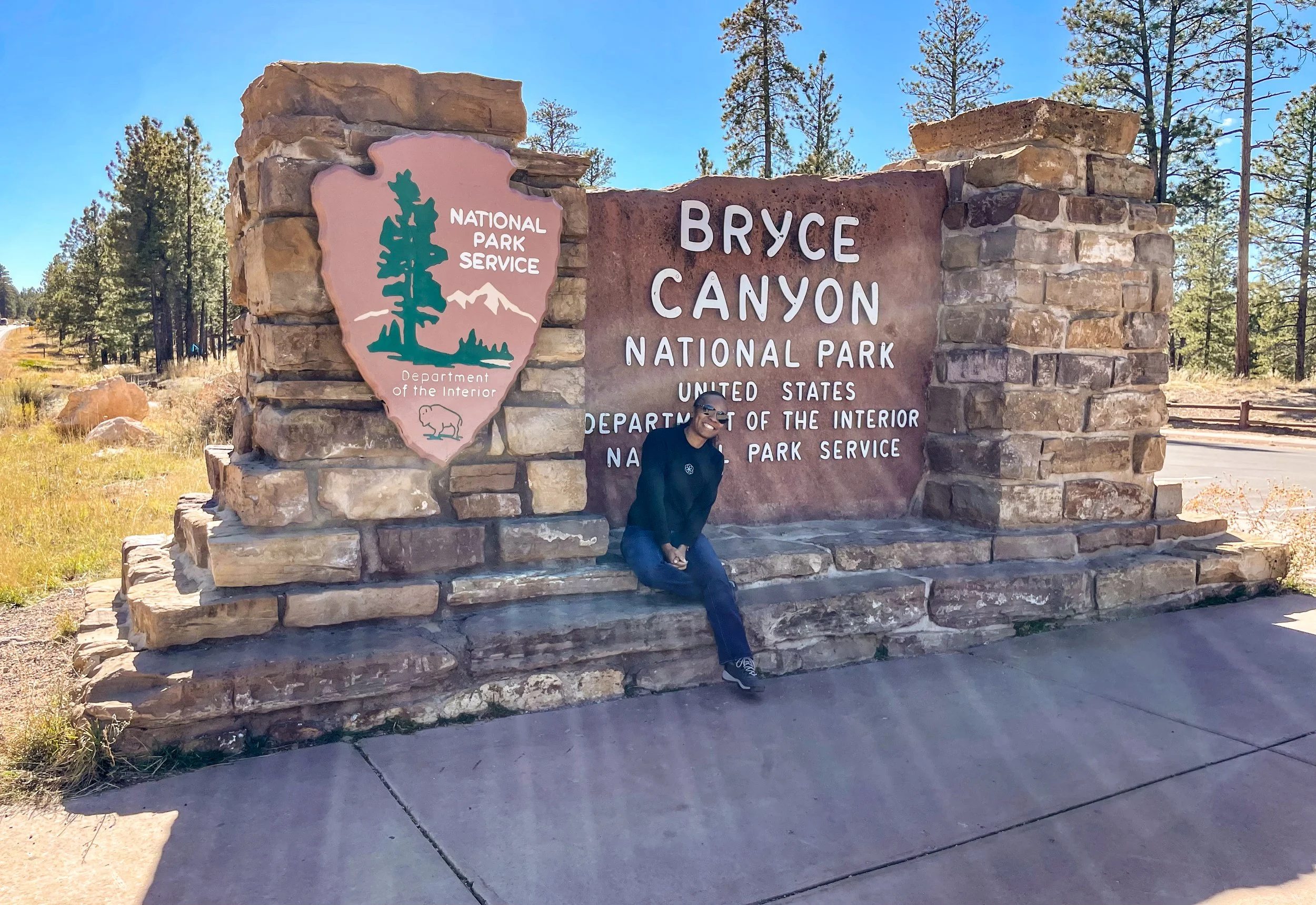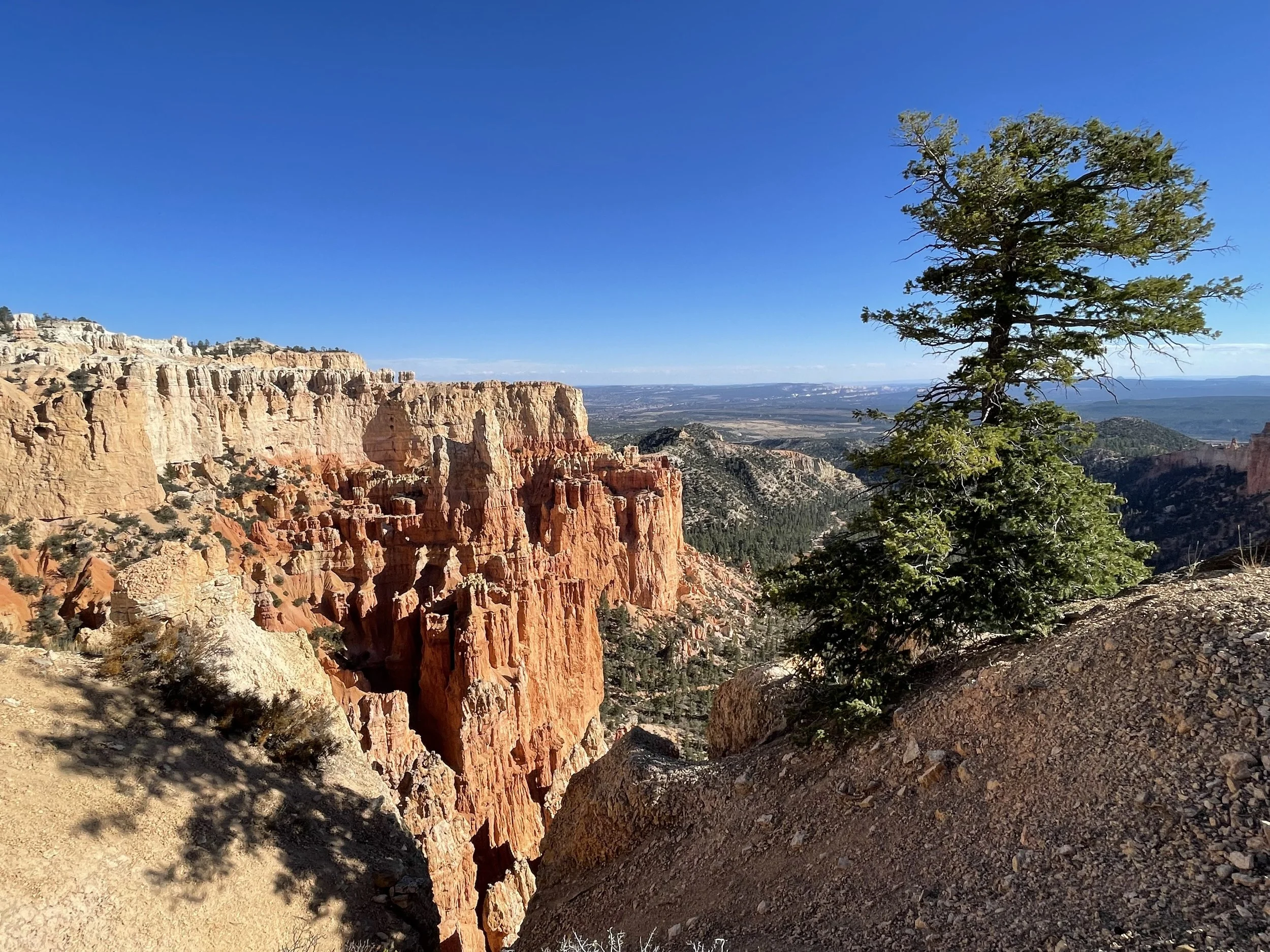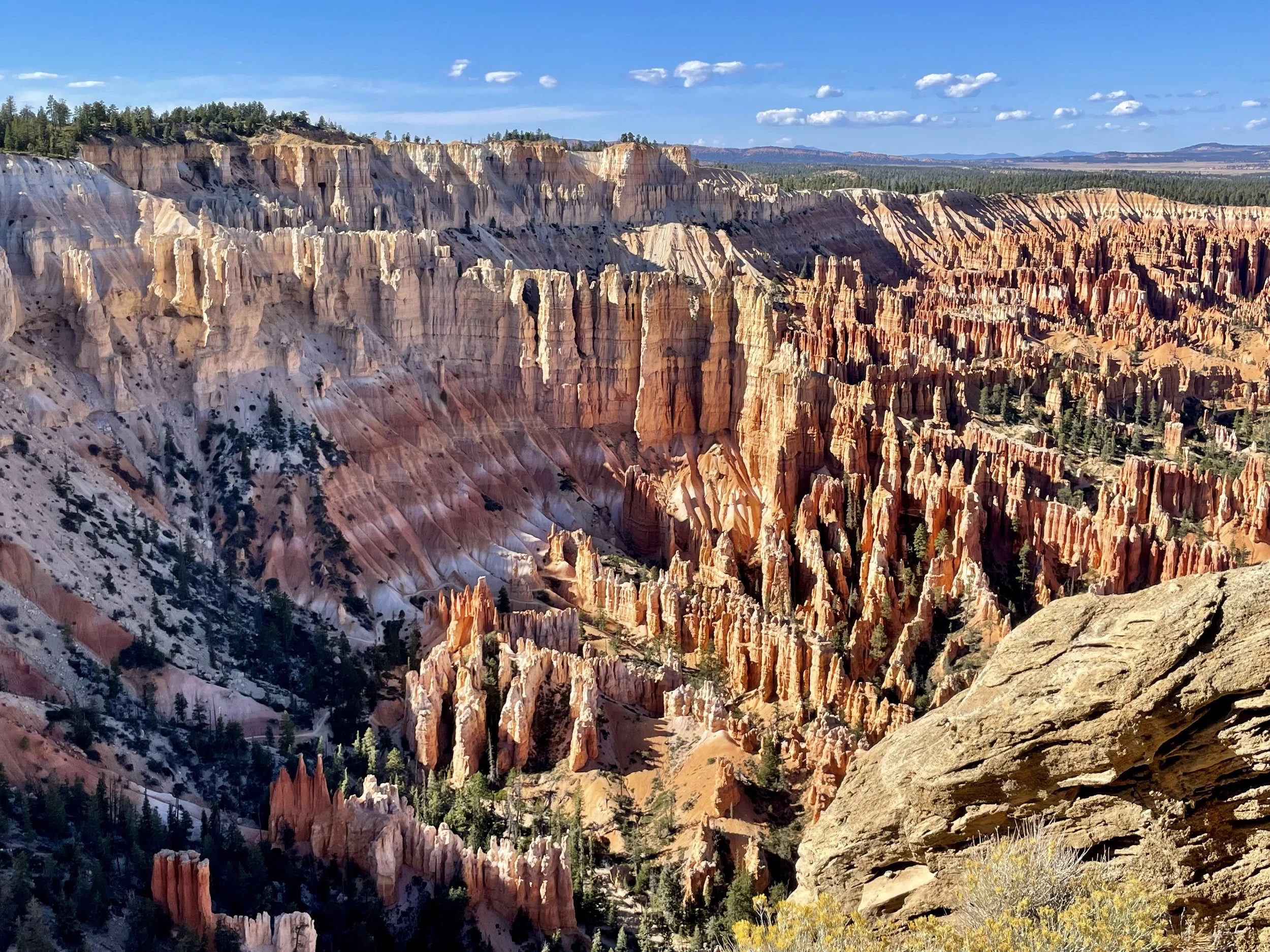#16 Bryce Canyon National Park, Utah
While driving through Zion National Park, I noticed a sign stating the distance to Bryce Canyon was from the park. Given that it was still relatively early in the afternoon, I figured it might be nice to do a two-for-one, so I left Zion and drove the 84 miles to Bryce Canyon National Park.
The drive between the two parks was peaceful and beautiful. We passed through valleys and hills, surrounded by the stunning red rock formations that make this region so famous.
As I entered the park, I paused at the entrance sign to take a few photos. Right away, I noticed that Bryce was much quieter than Zion, which I found refreshing. The visitor center parking lot had far fewer cars, allowing me to get in and out with ease. Since Bryce had recently celebrated its centennial, I was able to collect both my usual cancellation stamp and a special centennial stamp. The weather was perfect, with the late afternoon sun casting a stunning glow over the rock formations.
Bryce Canyon Visitor Center
Bryce Canyon is 35,835 acres (56 square miles) which makes it substantially smaller than Zion’s 146,597 acres (229 square miles) but no less mesmerizing. The canyon is famous for its hoodoos—tall, thin spires of rock formed by frost-wedging and erosion over millions of years. Unlike a traditional canyon carved by a river, Bryce is a series of natural amphitheaters eroded into the edge of the Paunsaugunt Plateau. The park’s unique geology creates a landscape filled with vibrant red, orange, and white rock formations that glow under the sunlight.
A Brief History of Bryce Canyon
Bryce Canyon was named after Ebenezer Bryce, a Mormon settler who homesteaded in the area in the 1870s. Locals referred to the amphitheater as "Bryce’s Canyon," and the name stuck. In 1923, the area was designated as Bryce Canyon National Monument before becoming a national park in 1928.
Park Information
Fees: $35 per vehicle, $20 per person (if entering on foot or bicycle), $30 per motorcycle. An annual Bryce Canyon Pass is available for $70.
Camping: The park has two campgrounds, North Campground and Sunset Campground, with a mix of first-come, first-served and reservable sites. There are also backcountry camping options with a permit.
Visitor Center: The Bryce Canyon Visitor Center is the main hub for park information, exhibits, and permits.
Best Time to Visit: Spring and fall offer the most comfortable temperatures and fewer crowds. Summer is the busiest season, while winter provides a unique and stunning snow-covered landscape.
Must-See Attractions
Bryce Amphitheater: The park’s most famous and iconic feature, filled with hoodoos and panoramic viewpoints.
Inspiration Point: One of the best viewpoints, especially for sunrise or sunset.
Sunrise Point & Sunset Point: Perfect spots for capturing the vibrant colors of the canyon.
Thor’s Hammer: A distinctive hoodoo that resembles a massive hammer balanced on a thin column.
Natural Bridge: A stunning natural arch formed through erosion.
Best Photography Locations
Sunrise Point: Ideal for capturing the first light illuminating the hoodoos.
Bryce Point: Offers an expansive view of the amphitheater and is especially great in the morning.
Inspiration Point: Best for golden-hour shots with deep shadows highlighting the rock formations.
Fairyland Point: A quieter location with spectacular views.
Popular Hiking Trails
Navajo Loop Trail (1.3 miles): A short but steep trail that descends into the amphitheater, passing through famous formations like Wall Street and Thor’s Hammer.
Queen’s Garden Trail (1.8 miles): One of the easiest ways to explore the hoodoos up close, connecting with Navajo Loop for a great combination hike.
Fairyland Loop Trail (8 miles): A longer, less crowded trail with fantastic views and up-close encounters with hoodoos.
Peekaboo Loop Trail (5.5 miles): A strenuous but rewarding hike through some of the park’s most stunning scenery.
Rim Trail (varies in length): Runs along the canyon’s edge, offering breathtaking views with little elevation change.





